(from my degree thesis, the translation is mine)
Origin
The Merinizzata
Italiana da Carne is a very recently established sheep breed:
actually its official "birth" dates back to 1989.
This breed belongs to the Merino strain, which is the most important
of ovine species; it is a group of breeds derived from Merino
breed, which spread since many centuries all over the world by
the outstanding fineness of its wool.
The strain takes origin from Central and Southern Spain and, according
some authors, it lives there at least from the Roman age, and
it's mentioned by Pliny the Elder and Strabo. According to other
authors it derives from North African breeds and it was imported
in Spain by the Arabs around 11th century, being named after the North African
Beni-Merines tribe (Sarti, 1996).
In Italy the traditional Merino-derived breeds are: Gentile
di Puglia, which originated from repeated outcrossing of Merino
sires on Apulian native breeds, above all the Garfagna, belonging
to the Apennine population (Dell’Aquila et al., 1995;
Sarti, 1996), between 1435 and 1442, on the initiative
of king Alfonso I of Aragon, and the Sopravissana,
derived from partially repeated outcrossing of Merino-Rambouillet
rams, a present of the king of France to Pope Pius VI in 1792,
on Vissana breed ewes, also belonging to the Apennine population,
in the Visso area, in the province of
Macerata, on Sibillini Mountains; the establishment of the breed
was achieved in 1820-1830 period by Piscini and Rosi (Sarti,
1996), while the Merino outcrossing on it continued until 1880
(Baldelli, 1997).
Other Merino-derived breeds like Gentile di Calabria, Gentile
di Lucania, Quadrella or Bastarda
Spagnola, Alife Castle sheep, Pietraroia, San Giorgio, Marcone
and Molara, which for the most part died out, are assimilable
to the Gentile di Puglia (Tortorelli, 1984; Sarti,
1996), while Corniglio breed is nearly
extinct (Baldelli, 1997).
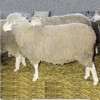
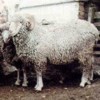
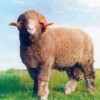
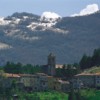
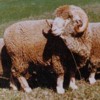
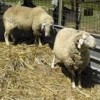
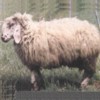
The two Merino-derived main breeds,
once widespread in the Central-Southern area of Italy, have been
throughout centuries tied up to transhumance, like on the other
hand their Merino ancestor in Spain (Analla et al., 1998);
the transhumance took place towards the Abruzzo Apennines from
the Tavoliere delle Puglie (the Gentile di Puglia) or from the
Roman Campagna (the Sopravissana) (Tortorelli, 1984; Negrini,
1998).
In the last decades, beginning from the thirties (Pollidori,
1996), the two Merino-derived breeds gradually disappeared, due
to changes in economy, mainly starting from the last postwar period,
so much so that they were included among the breeds threatened
by extinction, according to the EEC Regulation No 2078/92 (Pollidori,
1996). Suffice it to say that in 1967 the Sopravissana breed by
itself counted 1,300,000 heads (Sarti, 1995), while today
its population counts a few thousands heads (Morbidini et
al., 1995).
The almost irreversible passing of the two breeds was caused by
the unrestrained crossbreeding, which was put into effect in many
different ways, pursuing several conflicting producing aims (Burini
and Morbidini, 1997), to leave a production system no more
viable after the huge postwar changes.
In particular the abandonment of agriculture and the advent of
man-made fibers have been decisive factors; the latter determined
a slump in wool price, which led to the withdrawal from the production
of the natural fiber, since the shearing costs had equalled the
market value of the product (Dell’Aquila et al., 1995).
Moreover the transhumance cannot be practiced anymore with the
same proportions of the past, for the shortage of steady and trained
labour (Dell’Aquila et al., 1995; Morbidini,
1996) and furthermore the increase in meat demand, due to a better
economic welfare, determined the need to reconvert the Italian
Merino-derived breeds to the production of this food (Pollidori,
1995; Negrini, 1998).
It must remark that even in this case the Merino-derived Italian
breeds met the same fate of their ancestor breed (Analla et
al., 1998) and of other Merino-derived foreign breeds like
Romney, Coopworth
and Perendale from New Zealand and
Clun Forest and Romney
Marsh from United Kingdom (Dell’Aquila et al.,
1995).
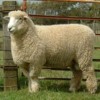
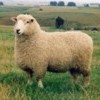
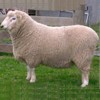
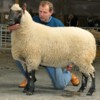
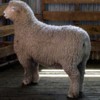
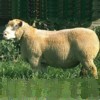
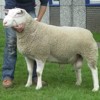
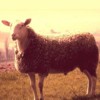
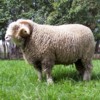
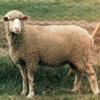
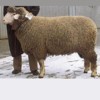
In order to bring about the needed
changeover to the meat production, the specimen showing the best
conformation and the bigger bulk were bred, so much so that the
breed standards issued in 1942 were amended to allow for the new
purpose, with particular reference to fecundity and fertility
(Pollidori, 1996).
At the same time the Italian Merino-derived breeds were crossed
with other European Merino-derived breeds like Württemberg
from Germany, Ile de France, Berrichonne du Cher and Berrichonne
de l’Indre from France, Merino
Precoz from Spain and Trimeticcio
di Segezia, that is a crossbred Württemberg x (Ile de
France x Gentile di Puglia), obtained in Foggia, Apulia, at the
Ovile Nazionale (National Sheep Farm), of the Istituto Sperimentale
per la Zootecnia (Animal Production Research Institute), with
the collaboration of the Animal Science Institute of Bari University
(Dell’Aquila et al., 1995; Sarti, 1996).
Also Italian and European not Merino-derived meat breeds were
used as sire breeds; among them Barbaresca,
Appenninica, Bergamasca,
Suffolk, Colbred,
Dorset, Texel,
and even of dairy breeds like Sarda, Comisana, Massese
and Leccese (Pollidori, 1995;
Sarti, 1995; Burini and Morbidini, 1997; Negrini,
1998; Sarti F.M. and Panella, 1999).
Initially the result were excellent and the "Piano Carni"
(Meat Programme) issued by the Cassa del Mezzogiorno (Southern
Italy Development Fund) in the seventies, even funded the purchase
of rams from abroad. (Pollidori, 1995).
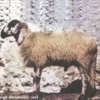
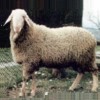
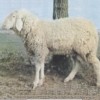
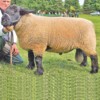
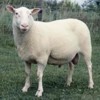
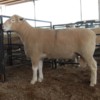
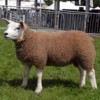
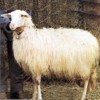
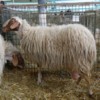
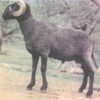
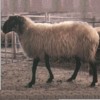
Anyway what seemed to be a safe
progress gave rise to many nuisances, since the higher production
traits of the foreign breeds are fully displayed at a slaughter
weight higher than that required by the Italian market. Moreover
the rams introduced as sires, although their price was very high,
didn't adapt to the Italian climate, and above all to the breeding
condition (Burini e Morbidini, 1997), showing a poor viability
and a reduced mating activity, expressed sometimes as being "no
more polyestral, prone to heat polypnea, with a reduction or total
deletion of ovulation in ewes and mating laziness and frigidity
in rams, showing infecundity caused by a reduced spermatozoa viability."
(Pollidori, 1995).
So as to compensate for the rise of operating costs with a productivity
boost (Sarti, 1995), the crossbred lambs who had to be
terminally sired were instead reared as breeders, in order to
"get over the slowness and troubles of the selection process"
(Sarti, 1992a), implied in genetic improvement, and this
hampered a quick adaptation to the modified production conditions
(Sarti, 1995).
Consequently an uncontrolled multi-breed crossbred population
was obtained, not directed towards a well-defined selection goal,
even for the lack of detailed technical and scientific standards
(Pollidori, 1995), and moreover it didn't take any profit
to the breeders, since the consumers were still inclined towards
low weight lambs (Negrini, 1998), and at last the production
was made "uneven and very diversified in the various genetical
types" (Pollidori, 1995).
On the other hand what happened with the Merino-derived breeds
is unfortunately a very common trend in Italian sheep breeding,
since our sheep population counts 30% of head that cannot be ascribed
to any ethnic group (Sarti, 1991, 1996).
At the end of the eighties, in order to make up for the situation
that was built up, it was resolved to make a selection to obtain
a proper breed, beginning from the "mixed salad" made
of multi-breed specimens of dubious origine and of uncertain conformation
and productiveness (Panella, 1992; Morbidini, 1996),
even with the goal of directing and guiding the breeders, which
were uncertain between meat production, not yet remunerative,
and milk production, already given to specialized breeds, raised
in less marginal environments (Burini and Morbidini, 1997).
Also the considerable gap in sheep meat self-sufficiency of Italy
was considered, in spite of the very low per capita consumption
(1.7 kg., 60 oz, in 1999), trying to reduce it, planning and hoping
in a new place in the market for more grown-up lambs and for a
consumption not linked to the traditional periods (Easter and
Christmas), supplying the market also with structured cuts and
ready-to-cook cuts (Morbidini, 1996), which could be more
easily marketed by the large-scale retail trade.
It must also consider that per capita consumption, in some region,
like Veneto, having a very poor sheep breeding tradition, are
really low (0.5 kg. 18 oz, per capita per year) and they could
probably be increased with appropriate promotional strategies
(Giuliotti and Martini, 1992).
So in 1988 a working group fixed the breed standard, as a preparatory
tool to be used to detect some suitable genotypes into the multi-breed
crossbred population (Morbidini et al., 1995), which was
approved in 1989 by the Central Technical Committee of the Ovine
Breeds Herdbook, the technical body of Asso.Na.Pa., Associazione
Nazionale della Pastorizia (National Association of Sheep and
Goat Breeding).
Starting from 1993 the Animal Science Institute of Perugia University
started a field research to define the ethnodemographic situation
of the Merino-derived population and to undertake a preliminary
selection (Morbidini et al., 1995).
The new text of "Typical traits and improvement lines for
the Merino-derived breed" was approved in 1997, with a Decree
of the Minister of Agricultural, Food and Forest Resources (Pollidori,
1995).
Traits
The breed standard of the Merinizzata
Italiana da Carne requires a medium-large size: minimum withers
height 71 cm. (28") for the rams and 62 cm. (24") for
the ewes, minimum weight 77 kg. (170 lbs) for the rams and 53
kg. (117 lbs) for the ewes.
The somatic traits refer to a marked aptitude to meat production,
even if the good traits of wool fineness (a diameter of 18-26
mm)
were retained, in order to avoid a genetic drift with deviation
from the Merino pattern; the ewes also give milk with a good quality
for cheese-making, suitable for the production of typical cheeses,
which however can be easily marketed (Morbidini, 1996;
Asso.Na.Pa., 1997b).
The Merinizzata Italiana da Carne is not a sheer beef breed, as
it is endowed with traits of rusticity and adaptation to the Italian
climate and rearing condition, which are oftentime difficult since
they take place in marginal environment conditions (Boyazoglu,
1992; Morbidini, 1996; Panella and Sarti, 1996).
The breed gets anyway to a good somatic development, with good
growth rates, good Feed Conversion Ratio and frequent twin lambings
(Panella et al., 1995).
The rusticity of this breed could derive from the likely African
origin of Merino strain: the especially good adaptation to the
warm and dry climate of Southern Italy is due to a good thermal
balance, given by a reduced metabolism, with a better utilization
of the feed's gross energy for maintenance and production (Sarti,
1991).
The typical employment of Merinizzata Italiana da Carne is the
production of light lamb, weaned at 6-7 weeks of age, with a slaughter
weight of 15-20 Kg. (33-44 lbs), and it's less and less used to
produce suckling lambs, generally yielded by early weaning dairy
breeds, even if the Merinizzata could give a good quality suckling
lamb. Also the employment for the heavy lamb production is very
poor, partly for the low demand from the market (Sarti,
1992a; Massi, 1992; Panella et al., 1995).
The improvement
The Associazione Nazionale della
Pastorizia (Asso.Na.Pa.) attend to the running of the breed's
Herdbook and, with the collaboration of the Breed Committee and
of the Provincial Breeders Associations, yearly organizes the
performance tests, on 100 rams every year, in order to pick out
the sires endowed with the morphofunctional requirements appropriate
to reach the goals fixed by the selection scheme (Morbidini,
1996; Asso.Na.Pa., 1997b). The performance test is of fundamental
importance in the selection of adequately uniform sire lines,
and makes use of linear assessment (Panella, 1992; Morbidini
et al., 1995; Roberti, 1995; Sarti F.M. e
Panella, 1999; Asso.Na.Pa., 1999, Roberti, 2000)
for traits like rump lenght and width, withers height, trunk lenght
and chest girth that, being more difficult to be measured, can
if necessary be replaced with chest width (Sarti F.M.e Panella,
1999).
The selection goals are the improvement of lamb's weight at 60
days, the achievement of a good body conformation, the preservation
of good maternal skills, an adequate lactation length, the attitude
to multiple lambing and the achievement of a higher morphological
uniformity (Colangelo and Bochicchio, 1996; Asso.Na.Pa.,
1999; Roberti, 2000).
Wool production is marginal, but there's an effort to preserve
anyway its quality and to reach a sufficient homogeneity of the
quality itself, in the absence of which it's difficult to imagine
to merchandize it (Sarti, 1991); it must remark that in
the Technical Standard, among the flaws to be eradicated and those
that can be allowed in the breeders, a sizeable portion concerns
the fleece (Asso.Na.Pa., 1997a).
It must bear in mind that the selection work, aimed to obtain
a homogenous population with a low biometric variability, appears
to be long and difficult (Panella and Sarti, 1996), and
it can be considered still in progress and not close to its ending,
seeing the very wide genetic base of the starting multi-breed
crossbred population, the vastness of the distributional area,
the farm's features, including the frequently poor technical background
of the farmers and the marginality of the breeding areas. These
characteristics lead to be careful in greatly carrying the selection
towards high bulk and height and emphasize the need of keeping
a relevant milk production (Panella and Sarti, 1996; Asso.Na.Pa.,
1999).
Seen that the breed situation is in progress, and seen the persistent
lack of homogeneity, the selection work is performed under temporary
derogation with regard to kinship testing, and also individuals
generated by crossbreeding with Italian Merino-derived genetic
types can be admitted to the genealogical book (Roberti,
2000).
The present population counts about 600,000 heads, reared for
the most part in the regions Abruzzo, Molise, Apulia and Basilicata
(Roberti, 2000); in 1995 about 19,000 heads were recorded
in the Registry Book, that at the time was taking the place of
the Herdbook (Asso.Na.Pa., 1997a).
If you want to quote this article, please refer at it as: GADDINI A. (2000) Influenza dell’età di macellazione e del sesso sulla qualità delle carcasse e delle carni di agnelli di razza Merinizzata Italiana da carne. Degree Thesis, University of Perugia, Italy: 45-57.
BIBLIOGRAPHIC REFERENCES:
- ANALLA
M., MONTILLA J.M., SERRADILLA J.M. (1998) Analyses of lamb weight and ewe
litter size in various lines of Spanish Merino sheep. Small
Ruminant Research, 29: 255,259.
- ASSO.NA.PA.
(1997a) Razze
derivate merine, caratteri tipici e indirizzi di miglioramento.
L’Allevatore di Ovini e Caprini, 4: III-VIII.
- ASSO.NA.PA.
(1997b) Caratteri
tipici e indirizzi di miglioramento delle razze derivate Merine.
Roma
- ASSO.NA.PA.
(1999) Schemi
di selezione per le razze ovine : Gentile di Puglia, Sopravissana,
Merinizzata Italiana da Carne. L’Allevatore di Ovini e
Caprini, 11: 4,
- BALDELLI
E. (1997) Ovinicoltura
pratica bioecologica. Edagricole, Bologna.
- BOYAZOGLU
J.G. (1992)
Produzione ovina con particolare riferimento all’Europa e
al Bacino Mediterraneo. - In: “Ovinicoltura” - UNAPOC,
Roma: 9-22.
- BURINI
P., MORBIDINI L. (1997) Una indagine conoscitiva sugli allevamenti
ovini in Umbria come punto di partenza per qualsiasi intervento
nel settore. Umbria Agricoltura, 3: 26,29.
- COLANGELO
A., BOCHICCHIO R. (1996) Una radiografia del settore ovicaprino
della Basilicata. L’Allevatore di Ovini e Caprini,
2 : 16,18.
- THE
COUNCIL OF THE EUROPEAN COMMUNITIES (1992) Council Regulation (EEC) No 2078/92
of 30 June 1992 on agricultural production methods compatible
with the requirements of the protection of the environment and
the maintenance of the countryside. Official Journal L 215
, 30/07/1992 P. 0085 - 0090.
- DELL’AQUILA
S., PIERAMATI C., RENIERI A. (1995) Indagini fenotipiche e genetiche
sul peso alla nascita, 30, 60, 90 e 120 gg. di agnelle di razza
Gentile di Puglia. Agricoltura Ricerca, 159: 117,121.
- GIULIOTTI
L., MARTINI M. (1992) La
qualità delle carcasse ovine. L’Allevatore di Ovini
e Caprini, 6: 3,7.
- MASSI
O. (1992) Aspetti
mercantili-annonari delle carni ovine. In: “Ovinicoltura”
- UNAPOC, Roma: 287-295.
- MORBIDINI
L. (1996) L’importanza
della costituzione di nuove razze da carne per l’allevamento
italiano. L’Allevatore di Ovini e Caprini, 7/8: 2-4
- MORBIDINI
L., PANELLA F., POLLIDORI P., SARTI D.M., SARTI F.M. (1995) - Verifica delle
caratteristiche riportate nello standard della razza Merinizzata
Italiana da carne. L’Allevatore di Ovini e Caprini,
10: 1,5.
- NEGRINI
G. (1998)
La lunga storia delle razze merinizzate. Informatore Zootecnico,
8: 61,63.
- PANELLA
F. (1992)
Il miglioramento genetico degli ovini da carne. In: “Ovinicoltura”
- UNAPOC, Roma: 251-259.
- PANELLA
F., MORBIDINI L.,SARTI F.M., SARTI D.M. (1995) - Caratteristiche delle carcasse
e qualità delle carni ovine, con particolare riferimento
alla razza merinizzata. In: Atti del Convegno: “L’allevamento
ovino e caprino in Basilicata: orientamento, attività selettive
e patologie”, Latronico (PZ), 14 dicembre: 41-70.
- PANELLA
F., SARTI F.M. (1996)
- Indirizzi di miglioramento genetico per gli ovini di razza Merinizzata
Italiana da Carne. L’Allevatore di Ovini e Caprini,
7/8: 6-8.
- POLLIDORI
P. (1995)
- Importanza della Razza Merinizzata Italiana da Carne nell’allevamento
ovino dell’Appennino centro-meridionale : programma di miglioramento.
- in Atti del convegno “L’allevamento ovino e caprino
in Basilicata : orientamento, attività selettive e patologie”
- Latronico (PZ): 71-88.
- POLLIDORI
P. (1996)
- Caratteristiche morfo-funzionali degli ovini di razza Merinizzata
Italiana da Carne. L’Allevatore di Ovini e Caprini,
7/8: 4,5.
- ROBERTI
L. (1995) La
selezione è il nostro mestiere - Informatore Zootecnico,
15: 47-50.
- ROBERTI
L. (2000) Programma
selettivo per le razze ovine ad attitudine produttiva carne. L’Allevatore
di Ovini e Caprini, 3: 2,3.
- SARTI
D.M. (1991)
L’allevamento e la produzione delle razze rustiche italiane.
L’Allevatore di Ovini e Caprini, 10: 5,10.
- SARTI
D.M. (1992a) Tipologie
e tecniche di produzione della carne ovina .In: “Ovinicoltura”
- UNAPOC, Roma: 281-285.
- SARTI
D.M. (1992b) Qualità
delle carni ovine. In: “Ovinicoltura” - UNAPOC, Roma:
311-314.
- SARTI
D.M. (1995) La
Merinizzata Italiana da Carne : la speranza di divenire una razza.
L’Allevatore di Ovini e Caprini, 5: 7,8.
- SARTI
D.M. (1996) Le
razze derivate Merinos ad attitudine carne nel centro-sud europeo.
L’Allevatore di Ovini e Caprini, 7/8: 1,2.
- SARTI
F.M., PANELLA F. (1999) Study of most suitable traits to use in
linear morphological evaluation of Merinizzata Italiana sheep.
- in “Atti del XIII Congresso A.S.P.A., Piacenza, 21-24
giugno” : 206-208.
- TORTORELLI
N. (1984) -
Zootecnica speciale. Edagricole, Bologna.
Links:
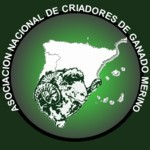

 page
created: January
20th 2012 and last updated:
February
6th 2012
page
created: January
20th 2012 and last updated:
February
6th 2012